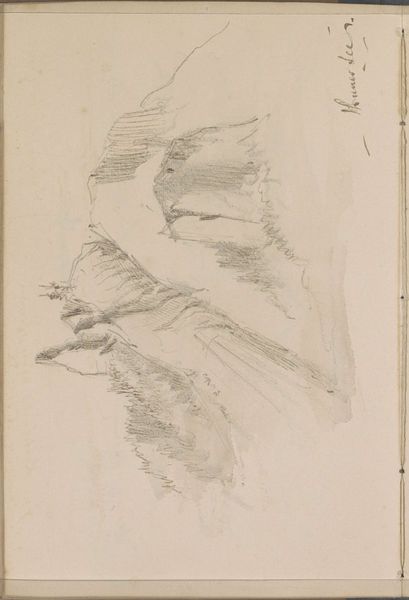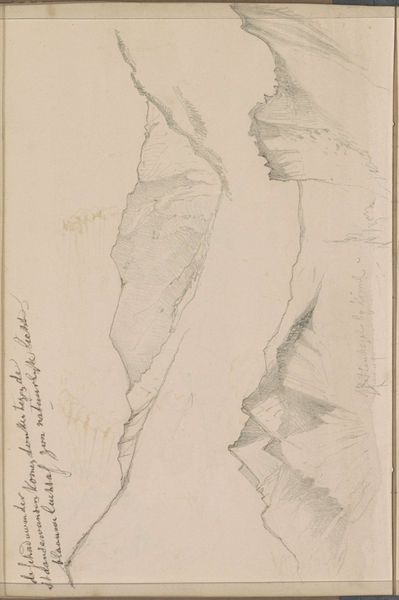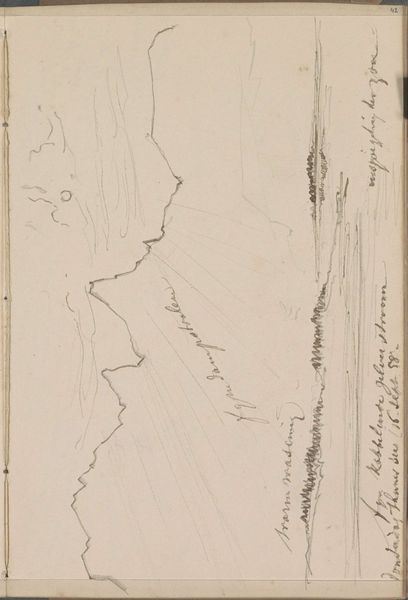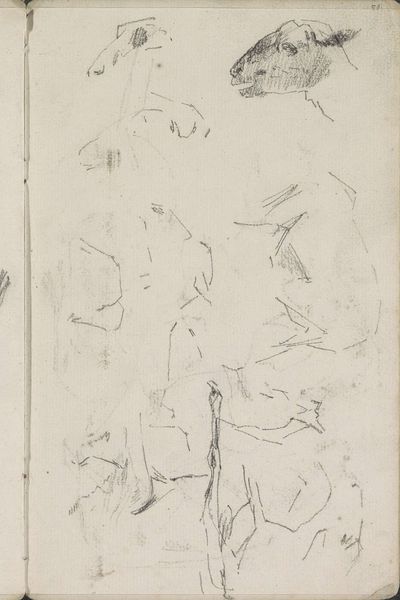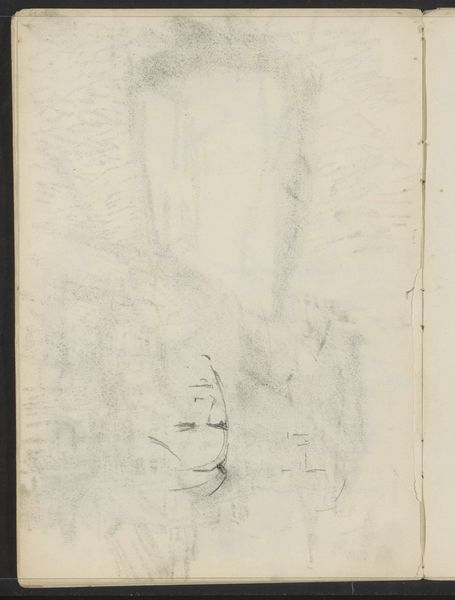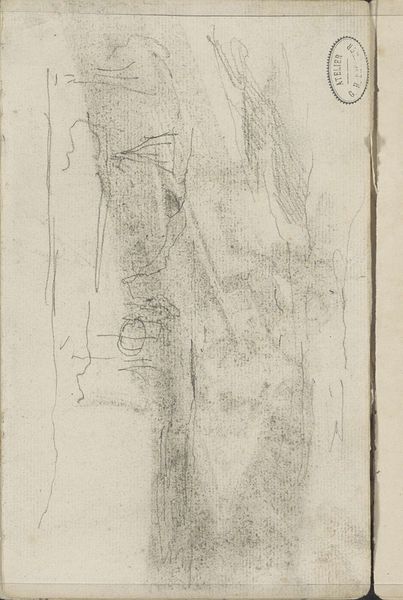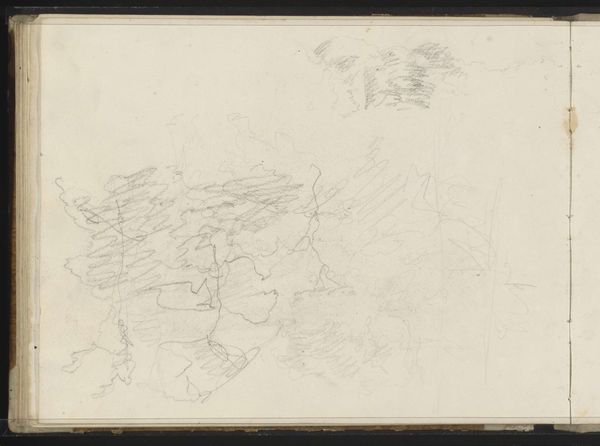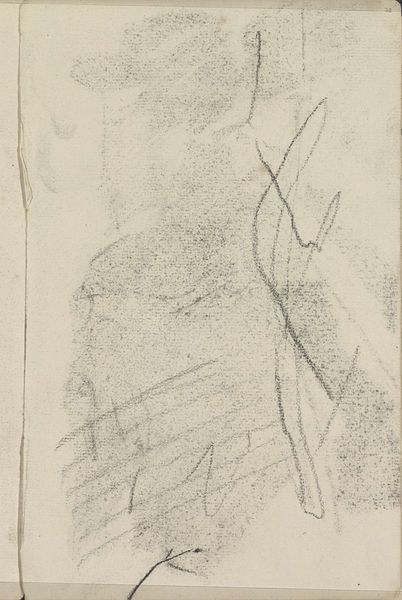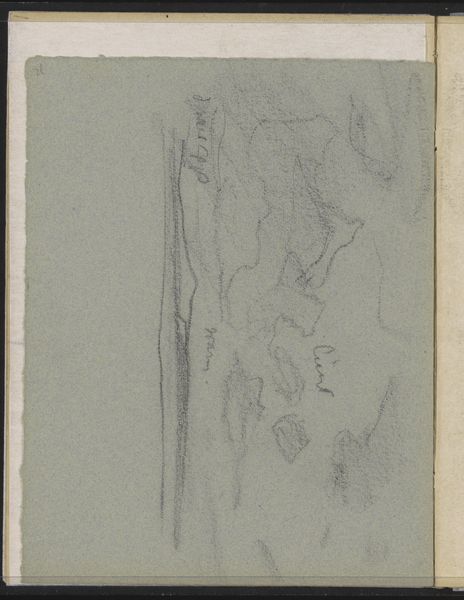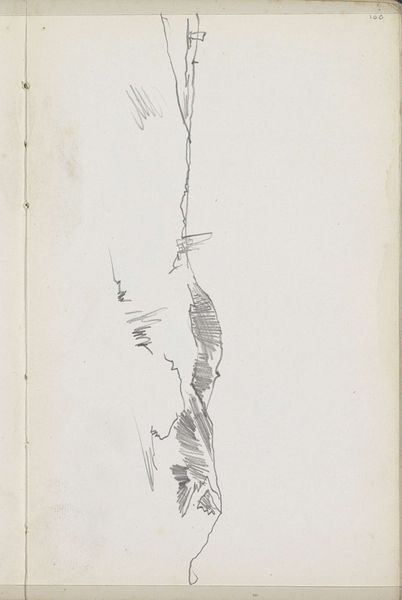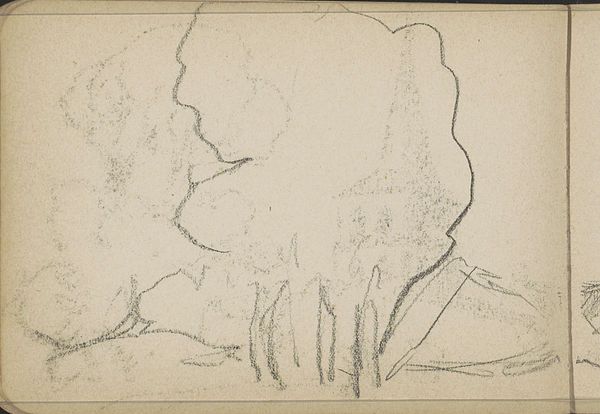
Copyright: Rijks Museum: Open Domain
Johannes Tavenraat rendered this drawing, "Waterval in Schaffhausen," with graphite. The sketch presents a study in form and tonal value through its composition. The drawing is structured by layered, curvilinear forms suggesting the cascading water and rock formations. Tavenraat's use of graphite ranges from light, tentative lines that define shapes to denser areas of shading that create depth and volume. This variation in pressure captures the movement and texture of the waterfall. The absence of sharp, definitive outlines softens the image, evoking a sense of fluidity and ephemerality. Tavenraat's strategic use of shading not only models the forms but also implies a contrast between light and shadow, heightening the dramatic effect of the scene. This method aligns with the Romantic era's interest in depicting nature's sublime and powerful aspects, while exploring the artwork's capacity to evoke feeling. Note that the interplay of lines, textures, and tonal values invites ongoing observation.
Comments
No comments
Be the first to comment and join the conversation on the ultimate creative platform.
